- JST Home
- /
- Strategic Basic Research Programs
- /
- ACT-I
- /
- [Information and future] Year Started: 2017
[Information and future] Year Started: 2017
*This Program finished in FY2021
Active Period: FY2016 - FY2021
Affiliations and titles are at the end of each research activity.
Ryo Akiyama
Controlling Object Appearance through Light Projection Induced Visual Illusion
Researcher
Ryo Akiyama
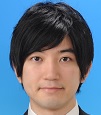
Ph.D Student
Graduate School of Information Science
Nara Institute of Science and Technology
Outline
Human brain processes colors relative to their environment. As a result, they can be perceived differently from their physical components. For example, although a tree leaf reflects both green and orange light rays during dusk, we still perceive its color as green. In our work, we utilize this feature of human vision to control color of objects through light projection. Our aim is to employ this intelligent light equipment to further explore unknown areas of human visual system and better understand its characteristics.
Daichi Amagata
Fast Neuron Data Retrieval based on Spatial Data Modeling
Researcher
Daichi Amagata

Assistant Professor
Graduate School of Information Science and Technology
Osaka University
Outline
Recently, many works have begun to figure out the mechanism of neurons and model them to simulate their actions and interactions on machines, which makes easier analysis of them. Because the cardinality of neurons is huge and their structures are complex, a technique to achieve fast simulation is required. Motivated by this, we deal with neuron as spatial data, and develop efficient techniques that mine some relationships between neurons.
Ari Hautasaari
Supporting Non-Native Speaker Contribution in Multilingual Collaboration
Researcher
Ari Hautasaari

Assistant Professor
Interfaculty Initiative in Information Studies
The University of Tokyo
Outline
This research aims to alleviate the problems non-native speakers of a language experience when trying to contribute their comments, opinions and ideas to the other members of a multilingual group in two modalities: face-to-face meetings and text-based group chat. The research approach focuses on exploring how to automatically detect non-native speakers’ status during meetings, share this information with native speakers, and influence the behavior of group members to include all participants equally in the collaboration. The objective in this project is to develop supporting technology for multilingual meetings where non-native speakers are a minority.
Miki Ueno
Developing a Dataset and Framework to Analyze Stories in Four-scene Comics Using Deep Neural Networks
Researcher
Miki Ueno

Assistant Professor
Information and Media Center
Toyohashi University of Technology
Outline
In this research, I focus on the multi-modal medium of four-scene comics, which depict a clear structure of stories, to represent states and causal relationships using natural language and pictures. I construct an original dataset and framework by integrating elemental technologies of machine learning to analyze four-scene comics. My aim is to share Japanese comic representation with different parts of the world to enhance communication and expand the possibility of co-creation with more people and computers.
Yoshitaka Ushiku
Creation of technology to automatically generate captions to various data
Researcher
Yoshitaka Ushiku

Principal Investigator
Research Administrative Division
OMRON SINIC X Corporation
Outline
For image / video caption generation, which is one of the ultimate forms of media understanding, there are three requirements, (i) correspondence to individual users, (ii) correspondence to detailed expressions, (iii) data without ground truth captions. Although it is inherently necessary to deal with it, it is still unattainable. In this research, we integrate advanced knowledge in various fields such as natural language processing, image recognition and machine learning, realize these functions, and enable caption generation from various kinds of data.
Mayu Otani
Story understanding from videos and text
Researcher
Mayu Otani
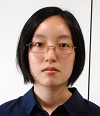
Researcher
AI Business Div. AI Lab
CyberAgent Inc.
Outline
Most effort in video understanding has been devoted to video captioning and video question answering. However, most of the problems provided by these tasks can be solved by understanding the content of one frame in a video. In this research, we will propose a new task focusing on stories expressed in videos as the next goal of advanced video understanding.
Yasushi Kawase
Algorithmic Research for Fair Allocation
Researcher
Yasushi Kawase

Assistant Professor
School of Engineering
Tokyo Institute of Technology
Outline
Allocation problem is to find an allocation of items to agents. The purpose of this research is to construct algorithms that find an (approximately) fair allocation efficiently. In particular, we explore the use of techniques from online algorithms to provide algorithms for allocation problems such as stable matching and combinatorial auction.
Shuhei Kurita
Knowledge extraction from large corpora and anaphora resolution through deep learning
Researcher
Shuhei Kurita

Ph.D Student
Graduate School of Informatics
Kyoto University
Outline
In regular conversations, we often omit entities that are implied when forming sentences. In order for computers to understand human conversations, they require anaphora resolution to infer omitted entities. In this research, we attempt to enhance the accuracy of anaphora resolution tasks with knowledge extraction and generation of pseudo training data from large unlabeled corpora, using deep learning techniques. We also propose methods to apply our techniques to machine translation and dialogue systems.
Atsushi Keyaki
Information retrieval system using semantic information
Researcher
Atsushi Keyaki

Assistant Professor
School of Computing
Tokyo Institute of Technology
Outline
I aim at developing an enhanced information retrieval (IR) system, in which we extract semantic information based on a natural language processing technique and take each user’s latent information needs and search intention into account. More specifically, our work achieves a “controllable” machine learning-based IR system by comparing search accuracies between traditional and cutting-edge machine learning-based IR techniques.
Tsutomu Kobayashi
Software Microscope: A System for Consistency-Preserving Automatic Abstraction of Formal Specification
Researcher
Tsutomu Kobayashi

Project Researcher
National Institute of Informatics
Inter-University Research Institute Corporation
Outline
Formal specification methods have attracted strong interest because they enable human developers to not only systematically verify but also understand properties of target systems. However, in reality, understanding, modifying, and reusing formal specifications are difficult due to the large size and complexity of contemporary software systems. To address this problem, we develop a system to automatically construct abstract versions of given specifications (and proofs of their properties), which is consistent with the given specification and focuses only on particular elements of target systems.
Yusuke Kobayashi
Theoretical Development of Algorithms in Shrinking Networks
Researcher
Yusuke Kobayashi

Associate Professor
Research Institute for Mathematical Sciences
Kyoto University
Outline
There are a lot of theoretical and practical studies on optimization problems in networks that are models of communication networks and transportation networks. In this research project, we deal with networks that cannot maintain the current scale. For such shrinking networks, we introduce mathematical models of “good” networks and develop a theory of algorithms to obtain “good” networks.
Shigeyuki Sato
An auto-tunable framework of generalized N-body algorithms
Researcher
Shigeyuki Sato
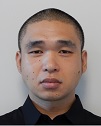
Assistant Professor
Graduate school of information science and technology
The University of Tokyo
Outline
Generalized N-body algorithms can work as a powerful programming tool for solving a wide range of application problems. Their potential applicability is, unfortunately, offset by considerable programming burden in implementing them efficiently for a specific problem on a specific parallel machine. To resolve this problem, we develop a domain-specific language for generalized N-body algorithms that is implicitly compiled to efficient parallel implementations and an auto-tunable runtime library.
Hiroaki Shiokawa
Time and Space Efficient Big Data Processing via Data Skewness Caching
Researcher
Hiroaki Shiokawa

Assistant Professor
Center for Computational Sciences
University of Tsukuba
Outline
Large-scale data analysis has been successful in a wide range of fields such as business, medical care and so on. However, a high-performance computer is indispensable so as to analyze such large-scale data quickly. The goal of this project is to establish time and space efficient algorithms that can handle large-scale data on the limited computation resources. The key idea of this project is to design data processing algorithms as to reduce redundant computations by using frequent data structures hidden in the data. With our proposal, we aim to improve feasibility of the large-scale data analytics.
Ryo Suzuki
The development of a visual programming language for making information technology accessible to everyone.
Researcher
Ryo Suzuki

Ph.D Student
Faculty of Science and Engineering
Waseda University
Outline
This project aims to develop a new visual programming language “Enrect” that assists everyone to access information technology in their own everyday life regardless of age, mother tongue, and physical ability. By combining a design that improves the understandability of the code, an interface best suited for touch operation, and a rich feature set, development of practical applications will be achieved with less time and learning cost than before.
Tasuku Soma
Efficient and unified algorithms for online submodular optimization
Researcher
Tasuku Soma

Assistant Professor
Graduate school of information science and technology
The University of Tokyo
Outline
Recently, submodular optimization has attracted interests in machine leaning and network science. However, traditional submodular optimization cannot deal with uncertainty in optimization problems. In this project, we will apply techniques in online optimization to submodular optimization and establish a new framework “submodular optimization under uncertainty”.
Tsuyoshi Takatani
Rendering Translucency and Glossiness on Digital Fabrication
Researcher
Tsuyoshi Takatani

Ph.D Student
Graduate School of Information Science
Nara Institute of Science and Technology
Outline
Digital fabrication is developed in both industrial and academic fields and utilized for various applications. However, main research topics are for shape and functionality but not for appearance. This work focuses on the translucency and glossiness of a fabricated object to render richer appearance as the purpose of this work. The key idea is combining 3D printer and UV printer to design the behavior of light on and inside of the object.
Chenhui Chu
Image-pivoted paraphrase extraction for deeper natural language and image understanding
Researcher
Chenhui Chu

Research assistant professor
Institute for Datability Science
Osaka University
Outline
A paraphrase is a restatement of the meaning of a text in other words. In this work, we extract paraphrases from images and their multiple related text using image regions as a pivot. It especially enables the precise extraction for paraphrases of the same concrete concept thanks to the mediation by images. The extracted paraphrases will significantly improve the performance for not only natural language tasks such as information retrieval but also natural language and image multimodal tasks such as visual question answering.
Ran Dong
Interaction between humans and puppets: Emotional motion expression design Using Japanese Bunraku puppets
Researcher
Ran Dong

Ph.D Student
Graduate School of Systems and Information Engineering
University of Tsukuba
Outline
Nowadays, Artificial intelligence assistants such as Apple “Siri” cannot become popular in human life. The reason can be considered as we can not feel the human emotion from those assistants. This research develops a communication robot using Bunraku puppets’ sophisticated emotional motion expression. We analyze difficult human emotional motion expression to makes communication home robot can express emotional motion artificially.
Toru Nakashika
Vocoder-free Non-parallel Voice Conversion Using Complex-valued Adaptive Restricted Boltzmann Machine
Researcher
Toru Nakashika

Assistant Professor
Graduate School of Informatics and Engineerings
The University of Electro-Communications
Outline
Voice conversion (VC) is a technique that enables articulation disorders and laryngectomized patients to enounce with their voices. There are two mainstreams in the VC technique: parallel and non-parallel approaches. Both approaches have their own issues: the former requires large amount of speech data, and the latter tends to degrade the converted speech due to use of a vocoder. The goal of this study is to propose a non-parallel VC method without using any vocoders, which overcome the two issues. I seek the best way to put VC into practical use and to help the people with oral disorders.
Takayuki Nishio
Learning Based Self-optimizing Wireless Networks
Researcher
Takayuki Nishio

Assistant Professor
Graduate School of Informatics
Kyoto University
Outline
This research aims to develop self-optimizing wireless networks, which optimize control parameters adaptively and maximize network performances so as to provide stress-free wireless access. The research studies a system architecture and learning scheme to acquire optimal wireless control.
Ryohei Hisano
Property Graph Approach to Incorporating Commonsense in Social Data Analysis
Researcher
Ryohei Hisano

Specially Appointed Research Associate
Graduate School of Information Science and Technology
The University of Tokyo
Outline
By storing various social data in a unified graph database and developing a graph algorithm over it, we aim to practice cross data analysis. From our approach we could, for instance, analyze inter firm buyer-seller network also taking into account various other hidden relationships behind the network. These hidden relationships includes what goods each firms produce, their meronyms, social network among CEOs, etc. which presumably carries important information over how we interpret the inter firm buyer-seller network. In the future, we aim to develop methods to reason over the database so that we could incorporate human level common sense.
Shuichi Hirahara
Study on Restricted Circuit Minimization Problems and Circuit Lower Bounds
Researcher
Shuichi Hirahara
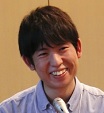
Ph.D Student
Graduate School of Information Science and Technology
The University of Tokyo
Outline
A computer consists of logic circuits, which are built by composing small components such as AND and OR gates. In order to build small hardware, it is important to minimize the number of gates. This task can be formulated as mathematical problem known as “Minimum Circuit Size Problem”, and it is one of the most central problem in computational complexity. This study aims at investigating the computational hardness of the problem.
Yosuke Fujii
Data-driven shape and motion analysis of two-photon microscopy image data
Researcher
Yosuke Fujii
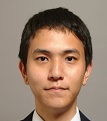
Ph.D Student
Graduate School of Medicine
Kyoto University
Outline
Two-photon microscope helps us observe live images of cell shape and motion. However, analyzing such imaging data is difficult. Imaging researchers make ad hoc features to analyze imaging data. In this research, data-driven feature extraction methodology of shape and motion will be developed from the standpoint of mathematics, statistics, and computer science. Feature extraction and quantification of shape and motion of cells makes it possible to integrate imaging data and omics research.
Matthew James Holland
Safe AI is efficient AI: improved generalization via robust learning algorithms
Researcher
Matthew James Holland

Research assistant professor
Institute for Datability Science
Osaka University
Outline
If machine learning technology is to become a central part of modern social infrastructure, it must be sufficiently reliable “in the wild,” where a high degree of autonomy, economy, and precision is required. Satisfying these conditions simultaneously is a challenging learning task, and modern learning algorithms look to be reaching their limits. To break past existing limitations, we develop a new class of learning procedures, characterized by an adaptive feedback mechanism, which prioritizes robustness and stability. By paying the small price of some minor computational overhead for improved statistical estimation, we can realize major savings on net learning time, all while dramatically reducing the variance of the learner’s output.
Haruka Matsukura
Inverse Analysis of Chemical Signal Flow By Machine Learning
Researcher
Haruka Matsukura

Assistant Professor
Graduate School of Engineering Science
Osaka University
Outline
The aim of this project is to establish a method that enables generation of a high-resolution gas flux map in a field of several tens of meters square from a limited number of gas concentration measurements. Gas is distributed in the field, following the diffusion-convection equations which show strong nonlinearity. It is difficult to perform the inverse analysis of the gas transport to estimate gas emission sites and the amount of gas flux. To overcome the strong nonlinearity problem, machine learning techniques are introduced in this project. The potential applications include monitoring of landfill gas emission and search for landmines.
Takashi Miyamoto
Detection of earthquake damage of housing structures from SAR satellite images using convolutional neural network
Researcher
Takashi Miyamoto

Assistant Professor
Graduate School of Engineering
University of Yamanashi
Outline
This study aims to achieve high accuracy in extraction of housing damage from SAR satellite images by applying approaches of characteristic extraction and discrimination based on a deep learning model to image analysis obtained immediately after earthquake. Upon identification of positions of housing structures within the images achieved by an integrated processing of satellite images and geospatial information, a damage discrimination with high accuracy is achieved by applying convolution neural network to pixel groups including houses.
Kazuya Murao
Annotation Method for Sensor Data using User’s Unresponsiveness to System Notifications
Researcher
Kazuya Murao

Associate Professor
College of Information Science and Engineering
Ritsumeikan University
Outline
Realizing high performance human activity recognition (HAR) technology using smartphone and wearable device requires large amount and wide variety of sensor data labeled with groundtruth, which expresses the situation the sensor data was captured. This research tackles on the construction of annotation method that ties data and groundtruth from how the users deal with notifications that occurred on the device. The proposed method contributes to the realization of the environment where groundtruth can be captured along with sensor data, resulting in the progress and prevalence of HAR technology in the future.
Shogo Yamashita
Developing a 3D Water Flow Measurement Technology for Swimming Pools
Researcher
Shogo Yamashita

Ph.D Student
Interfaculty Initiative in Information Studies
The University of Tokyo
Outline
The objective of this research is to develop a novel three-dimensional (3D) water flow measurement technology for swimming pools. This technique increases training efficiency in water sports and produces interactive video content in projection-based entertainment swimming pools. The technology has the potential to achieve a wider measurement field and has low adverse effects on the human body and sight, all of which are required for water flow measurement in swimming pools.
Hironori Yoshida
Participatory Architectural Design and Fabrication with Irregularly Shaped Waste
Researcher
Hironori Yoshida

Ph.D Student
Graduate School of Information Science and Technology
The University of Tokyo
Outline
Diverse natural materials such as stones and woods have been used as architectural elements preserving their native forms since primitive shelters, however, the use of them in modern buildings is limited due to their irregular properties. In this project, we take the diversity as playful inputs for design task, and develop a human-in-the-loop workflow for design and fabrication of architectural elements. Taking tree branches as a material in native forms, we aim to fabricate networks of branches and realize it by CNC milling process. Each connection has a customized unique joint adapted to the native forms of branches. Together with low-cost mobile scanning devices and collaborative interface between users and digital fabrication tools, users can easily contribute to the process of making, which was an advantage of traditional architecture with local materials.
Lijun Liu
Development of a method for high-performance multiscale analysis with time-space parallel computing
Researcher
Lijun Liu

Research assistant professor
Graduate School of Engineering
Osaka University
Outline
In this research, I propose to develop a fast multiscale computation method enable to coupling a microscale molecular dynamics model with a macroscale finite element analysis model. To realize a high-speed multiscale computation, I introduce the concept of hybrid time-space calculation which is challenging. In the parallel computing, not only the conventional space decomposition approach but also the state-of-the-art parallel in time algorithm are applied. The proposed method will be useful in various fields as a material analysis tool.













